Research & Surveys
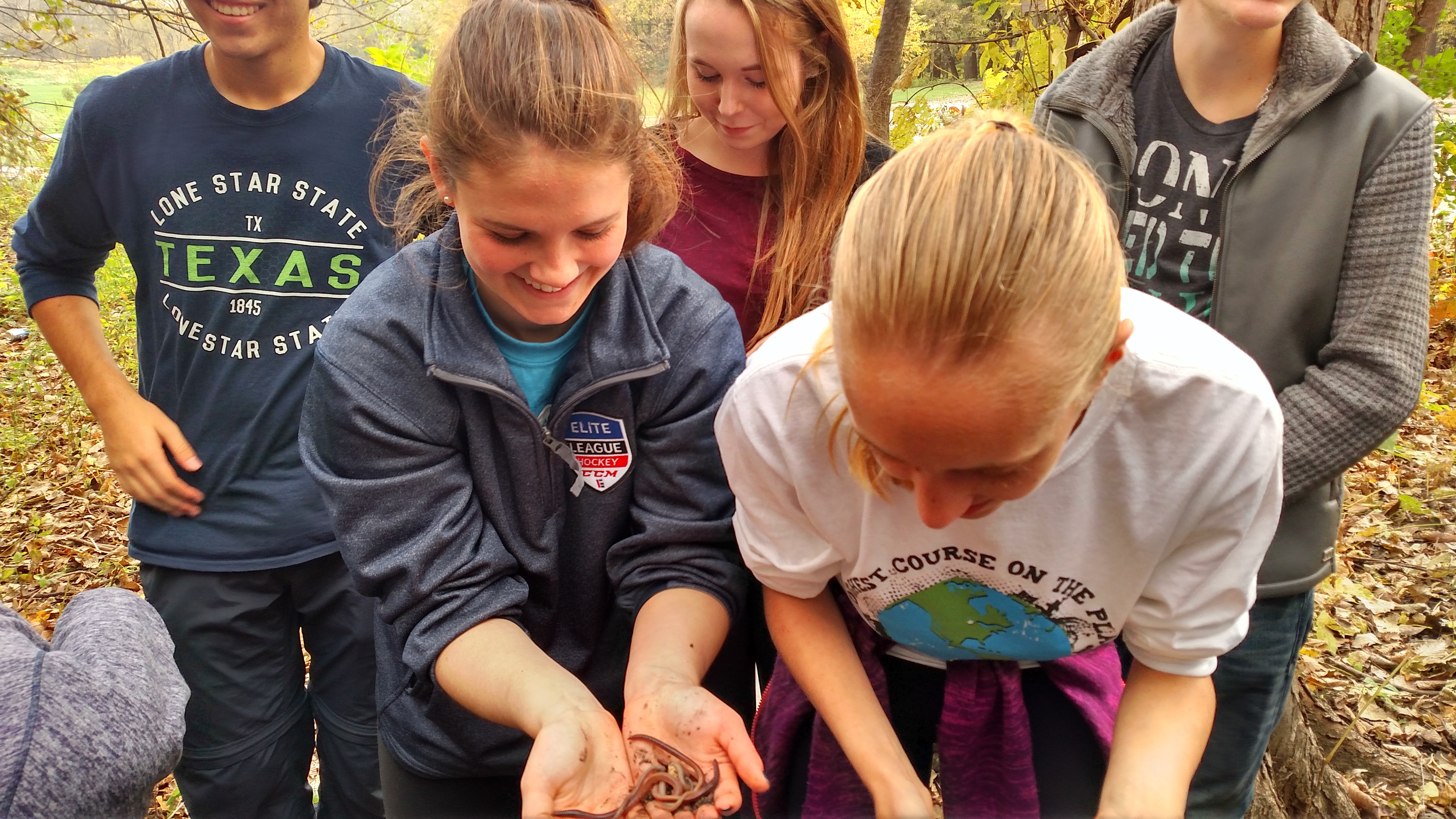
Looking for the Putting Down Roots report? Click here.
FMR's ecological research & monitoring
FMR's Land Conservation program has worked to restore over 2,000 acres in the Mississippi River's metro watershed. Our hope is that diverse natural communities of wildlife and plant life will return and thrive. And so far, our surveys and studies point to a positive connection between our habitat restoration work and the plants and animals our work is meant to support.
In addition to managing restorations, our ecologists study their project areas and practices to gauge the impacts of their methods. They ask questions like: How is the presence of wildlife changing post-restoration? Which method of invasive removal leads to more native plants thriving?
Our research and monitoring projects include:
- Breeding bird surveys at restored and native prairies
- Wildlife monitoring at William H. Houlton Conservation Area
- Wildlife camera monitoring of turtle nesting enclosures and more
- Monarch butterfly monitoring at a private Pine Bend Bluffs restoration site
- Pollinator monitoring with trained volunteers at select sites in Elk River, Inver Grove Heights and Hastings
- Insect monitoring at Wic̣aḣapi restoration with Open World Learning School
- Earthworm and other invasive species monitoring at Crosby Farm Regional Park restoration
- Buckthorn control testing at Hampton Woods restoration
- And other ongoing studies
Read on for our findings.
Wildlife surveys and monitoring
Breeding bird surveys at restored and native prairies in Dakota and Washington Counties: A multi-year comparison by Karen Schik
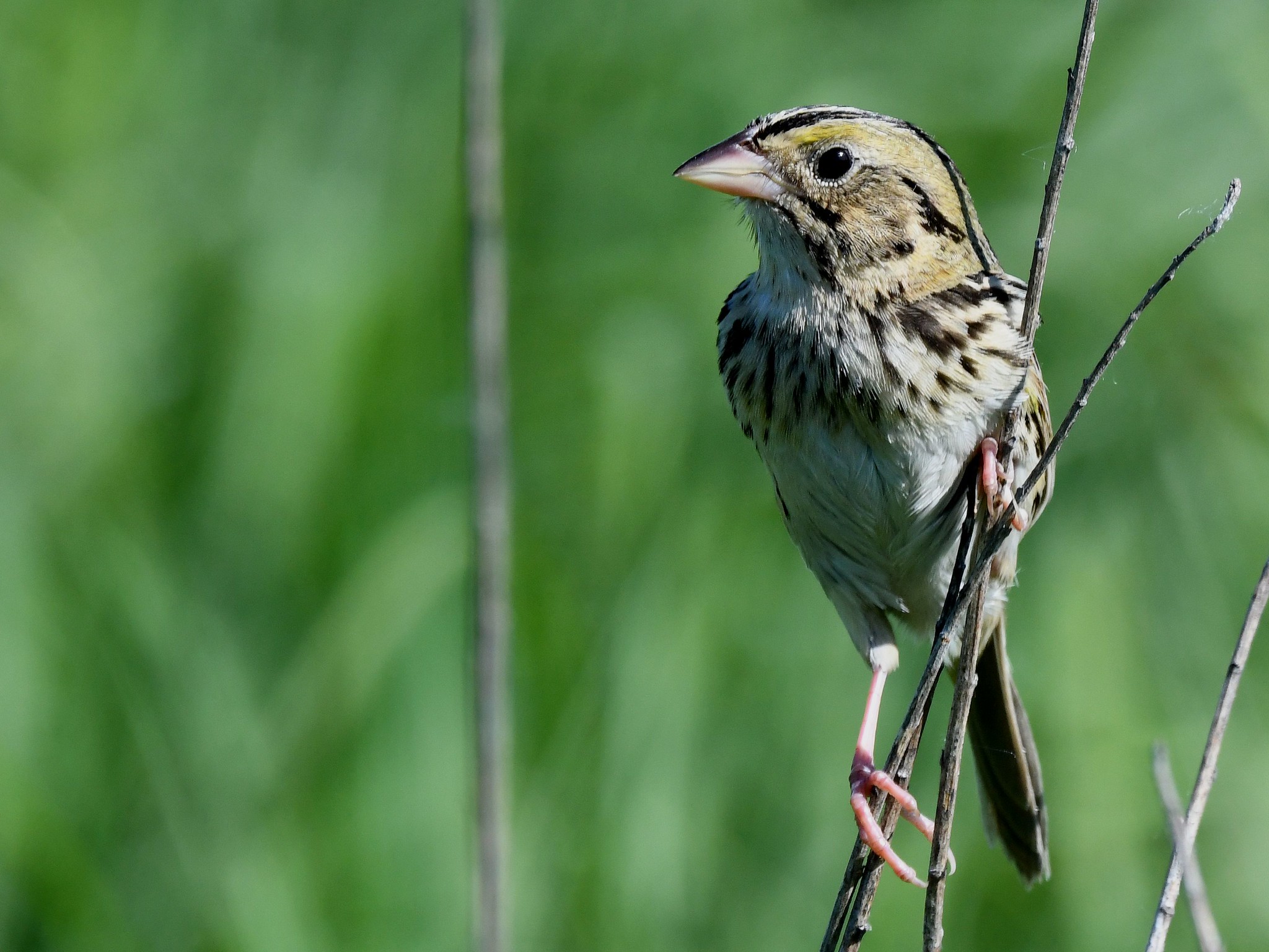
Analyzing over 10 years of data from breeding bird surveys, we found that at sites where FMR has completed prairie restorations, starting from either cropland or old field, there have been steady increases in the number of bird species and the number of Species of Greatest Conservation Need in the years following restoration.
Even relatively small sites demonstrated important value for prairie-dependent bird species, and our restorations also correlated with increased diversity at nearby remnant prairies.
• Read Karen Schik's November 2018 article.
• Read the full report.
Prairie skinks, pollinators, toads and more are returning to prairie restoration at William H. Houlton Conservation Area
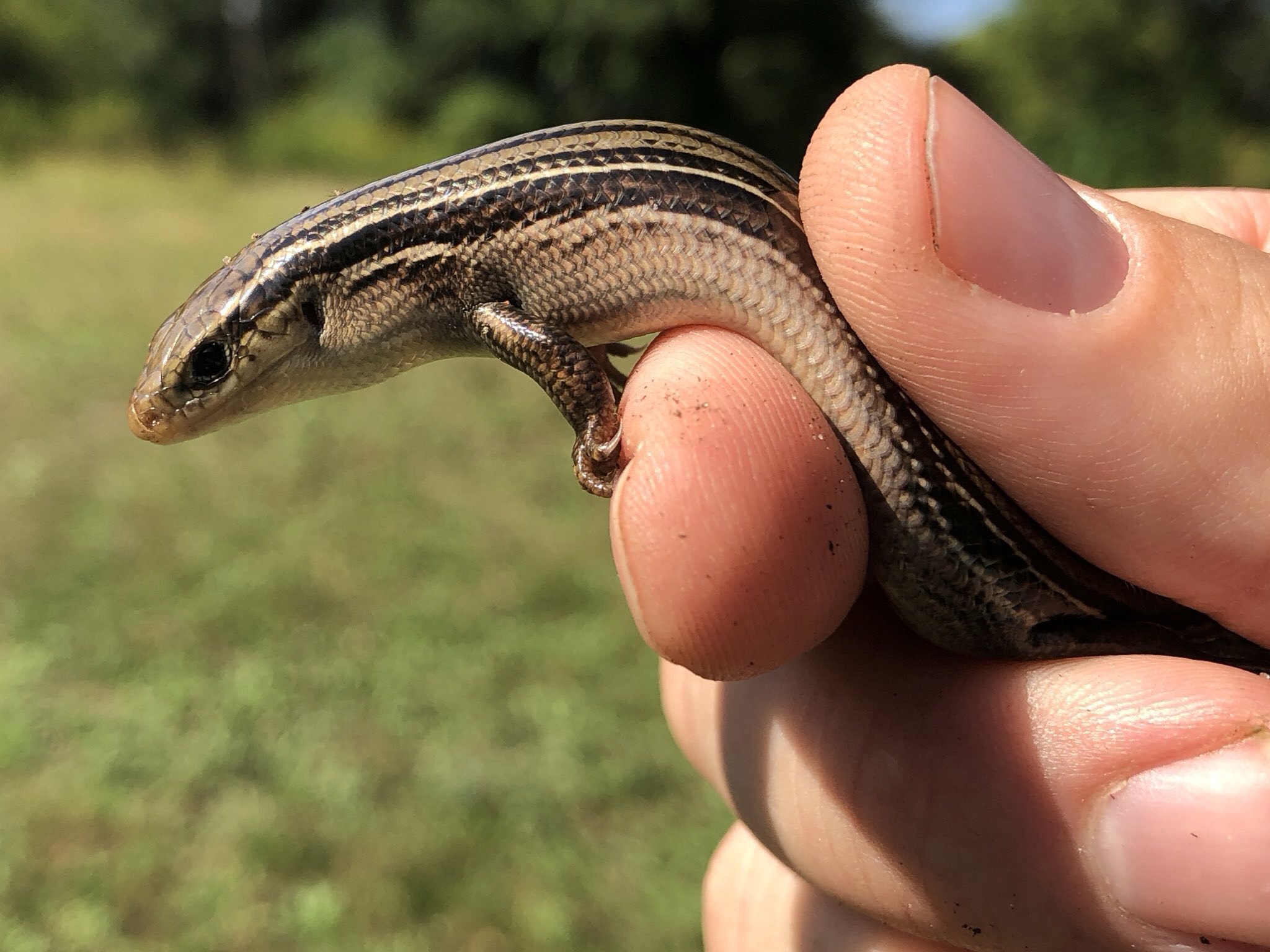
Since 2016, Elk River High School students have helped monitor the return of wildlife and the effects of our restoration at the William H. Houlton Conservation Area as we transition hundreds of acres from farm fields and degraded woodland to native wetland, prairie and forest habitat, funded through three phases of grants from the Outdoor Heritage Fund. In 2018, we began an even more intensive survey effort, hiring a wildlife biologist to conduct focused pollinator, amphibian, and reptile surveys in the ongoing prairie restoration acreage.
• Read about the wetland wildlife returning here in our June 2018 article.
• Read about skinks and pollinators in our July 2018 article.
• Read about the second year of monitoring and our finds in our February 2020 article.
• Read about our monitoring and finds here in our 2021 article.
Wildlife cameras & turtle nest protection sites
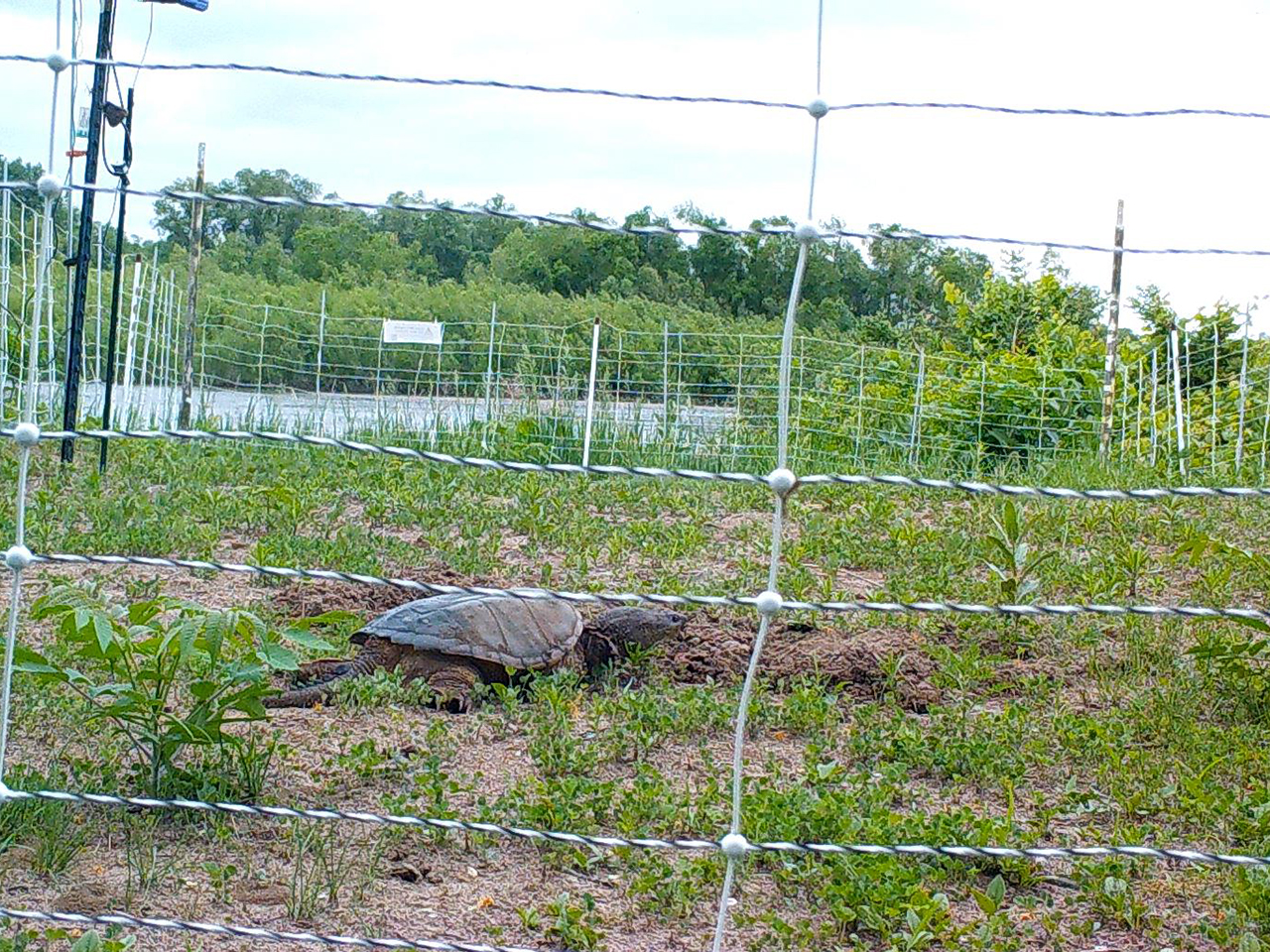
Wildlife cameras help us monitor our turtle nesting enclosures in the Spring Lake Islands backwaters and at William H. Houlton Conservation Area, as well as other wildlife at sites such as our Flint Hills Resources restoration area in Pine Bend Bluffs.
In early 2018, we created a turtle nest protection enclosure in Spring Lake Islands Wildlife Management Area in Dakota County. The enclosure protects a sandy bank where turtles have nested in abundance, but where their nests often fell victim to a variety of predators. During turtle hatching season, we review wildlife camera footage to see if the enclosure is succeeding in keeping young turtles safe. In late 2018, we began erecting another enclosure at the William H. Houlton Conservation Area with the help of a local Eagle Scout candidate.
• Read about the project's beginnings in our June 2018 article.
• Read about our first turtle hatchling sightings in our September 2018 article.
• See shots from our other wildlife cameras in this Flickr album.
• See the fisher our wildlife camera caught at Pine Bend Bluffs.
Pollinators & insects along the river
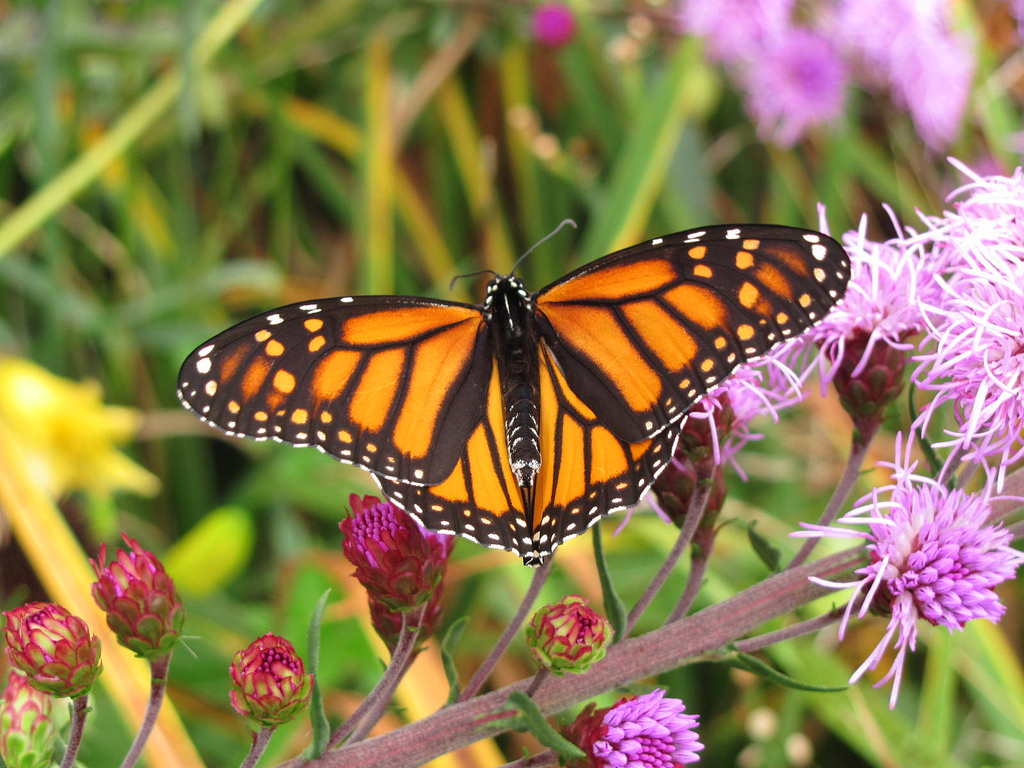
In 2017, we began monitoring for monarch butterflies at the Pine Bend Bluffs restoration at Flint Hills Resources in Inver Grove Heights. We submit our data to the University of Minnesota Monarch Lab. Hastings High School students have also begun to track bee and butterfly populations in three restored prairie areas at Vermillion River Linear Park in Hastings. And Open World Learning School has collected insects from a prairie that we've been working together to restore at Wic̣aḣapi in St. Paul.
• Read more about our citizen science monarch monitoring.
• Read about pollinator surveys in our July 2018 article.
• Read about pollinator surveys in our February 2020 article.
• Read about pollinator surveys in our 2021 article.
• Read about 2023 pollinator surveys.
Earthworms
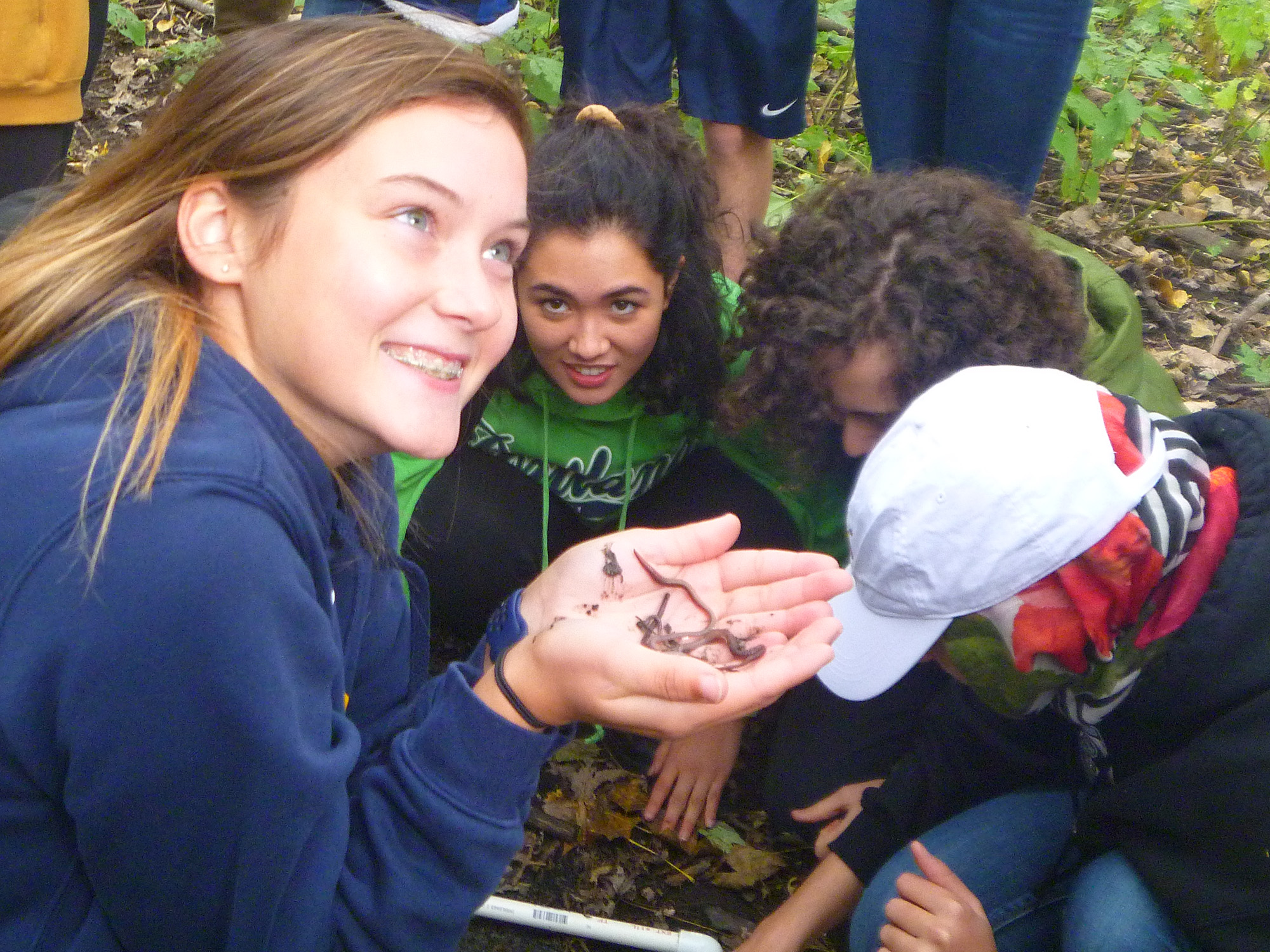
St. Paul Academy high-schooler Flannery Enneking-Norton decided to keep researching after a monitoring event with FMR at Crosby Farm Regional Park in St. Paul. FMR ecologist Alex Roth worked with Enneking-Norton to better understand the relationship between earthworms and their fellow invasive species, Common buckthorn, at our habitat restoration sites. The result? An interesting finding regarding the worst worm invader of all — nightcrawlers — and a first-place win for Enneking-Norton in the Twin Cities Regional Science Fair.
• Read more about Enneking-Norton's research in our March 2018 article.
Invasive earthworms also happen to be a big part of FMR Conservation Director Alex Roth's PhD studies. Alex even coauthored a study on the global distribution of earthworm diversity that made the cover of Science, and contributed to a global database on earthworms and the ecosystem changes they create. Read more about how these ecosystem engineers alter our forests.
Restoration methods research
What's the best way to control buckthorn and protect native plants? A study at Hampton Woods
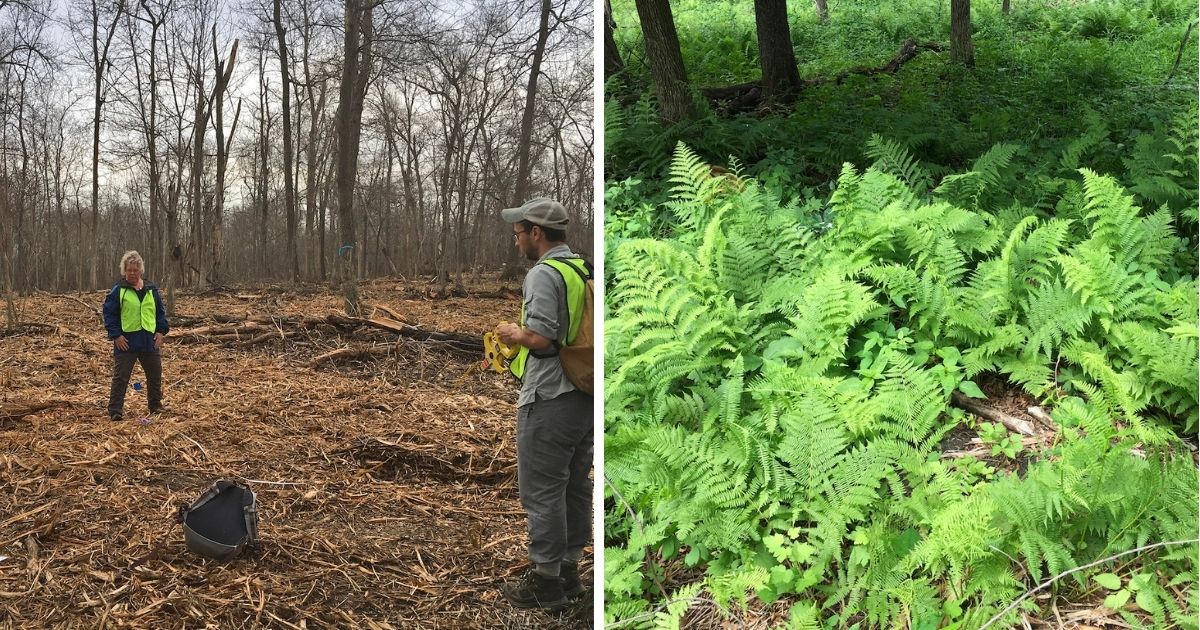
In early 2018, we set up a project to study the long-term effects of three different methods of controlling invasive buckthorn at Hampton Woods in Hampton, Minnesota. We tested four combinations of forestry mowing and herbicide application, then measured the impact on both buckthorn and native plants in those areas. This research could impact the way in which organizations like FMR approach buckthorn removal and improve not only the effectiveness with which we remove buckthorn, but also lessen the impacts of herbicide and other removal methods on native plant species.
• Read our April 2018 article about this study.
• And read the results in our 2022 article.
How do other plants contribute to buckthorn control?
FMR Conservation Director Alex Roth has researched the importance of replanting to suppress buckthorn once it's removed. His co-authored paper was published in 2020 by the scientific journal Restoration Ecology. In 2022, he co-authored a paper comparing how various seeding and planting regimes affect future buckthorn success. His studies on the role of dense forest cover in controlling buckthorn have also contributed to the U of M's Cover It Up project.
Alex has also published other papers on invasive plants in Minnesota that aim to better our understanding of how and why species like buckthorn spread so rapidly:
- Ecological Engineering (2025): Revegetation of Elymus grasses suppresses invasive Rhamnus cathartica in deciduous forest understories
- BioOne (2024): Understory Revegetation Enhances Efficacy of Prescribed Burning after Common Buckthorn (Rhamnus cathartica) Management
- Biological Invasions (2023): No evidence of a long‑lived seedbank in common buckthorn, Rhamnus cathartica L., within Minnesota deciduous forests
- Ecological Engineering (2022): Using plants to control buckthorn (Rhamnus cathartica): Improved biotic resistance of forests through revegetation
- Journal of Applied Ecology (2018): A tale of two studies: Detection and attribution of the impacts of invasive plants in observational surveys
- Journal of Vegetation Science (2017): Invasive plants in Minnesota are "joining the locals": A trait-based analysis
- Oecologia (2015): Invasive earthworms interact with abiotic conditions to influence the invasion of common buckthorn
Ongoing studies
At most of our restoration sites, year after year, we monitor vegetation to evaluate changes over time and the results of our management practices. We'll be sure to share the results of these efforts in Mississippi Messages, our e-newsletter.
Learn more
We often enlist community volunteers or school groups to help us monitor the lands and waters where we work. If you're interested in assisting with FMR monitoring projects, email volunteer@fmr.org.
Want to contribute to community science projects on your own? Here are a few of our favorite projects that request sightings and observations from the public.